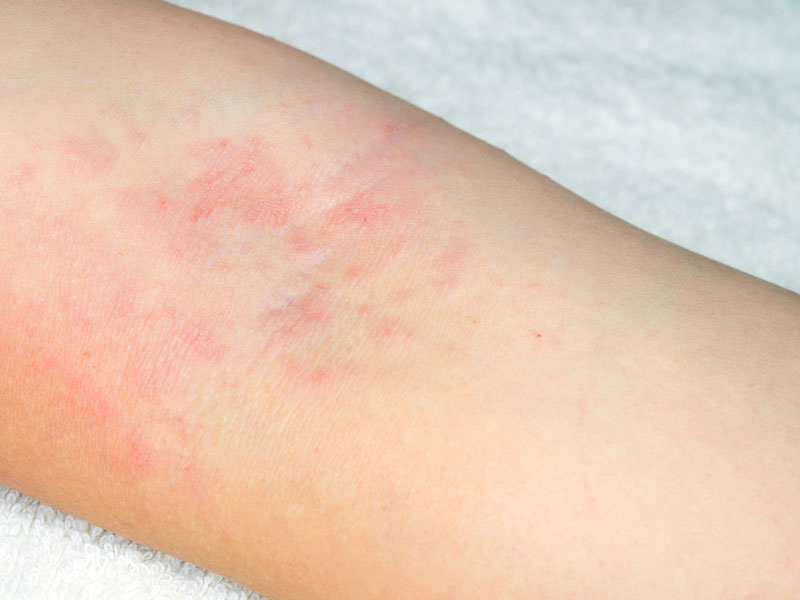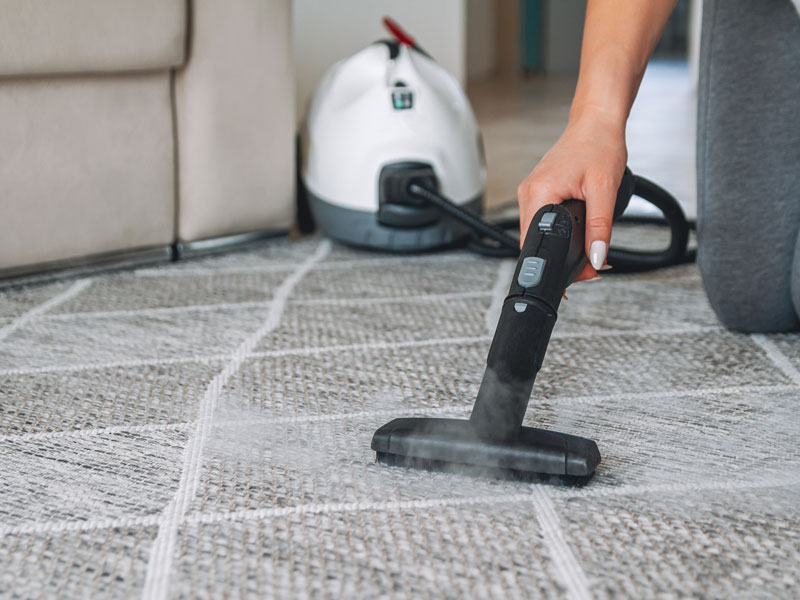Bedbug bites can be a nuisance and cause discomfort, but with the right knowledge and preventive measures, you can protect yourself and your home from these pesky pests. In this comprehensive guide, we will delve into everything you need to know about bedbug bites, from identifying the symptoms to effective treatment options. We will also provide valuable insights on how to prevent bedbug infestations and keep these unwelcome visitors at bay. Whether you’ve encountered bedbugs before or want to be prepared for any future encounters, this guide will equip you with the necessary information to understand, manage, and protect yourself from bedbug bites. So, let’s dive in and discover the world of bedbugs and how to keep them at bay.
What are Bedbugs?
Bedbugs are small, wingless insects that belong to the Cimicidae family. They are nocturnal creatures that hide in cracks, crevices, and furniture during the day, only to come out at night to feed on human blood. Despite their name, bedbugs can be found in various places, including mattresses, furniture, upholstery, and even clothing.
Identifying Bedbug Bites
Bedbug bites often go unnoticed initially, as they are painless. However, after a few hours or days, they can develop into itchy, red welts on the skin. The appearance of bedbug bites can vary from person to person, but they generally share some common characteristics. The bites are usually small, raised bumps with a red center, resembling mosquito or flea bites. They may appear in a linear pattern or clusters, often on exposed areas such as the face, neck, arms, and legs.
Symptoms of Bed bug Bites
Bedbug bites can vary in appearance and may present differently from person to person. While some individuals may develop immediate reactions, others may not show any visible signs of being bitten. Here are some common symptoms associated with bedbug bites:
- Itching: One of the most prevalent symptoms of bedbug bites is itching. The bites can cause intense itching, leading to discomfort and irritation. Scratching the affected area excessively can further aggravate the skin and increase the risk of infection.
- Redness and Swelling: Bedbug bites typically result in redness and localized swelling on the skin. The bitten area may become inflamed and appear slightly raised. In some cases, the bites may form a small blister-like structure.
- Linear or Clustered Pattern: Bedbug bites often appear in a linear pattern or clusters. This is because bedbugs tend to feed multiple times in one area before moving on to another location. The bites may be aligned in a row or grouped together in a small area.
- Delayed Reaction: It’s important to note that not everyone reacts immediately to bedbug bites. In some cases, symptoms may take a few hours or even days to develop. This delayed reaction can make it challenging to identify the source of the bites.
- Allergic Reactions: While rare, some individuals may experience an allergic reaction to bedbug bites. This can lead to more severe symptoms such as widespread rash, hives, or even difficulty breathing. Seek emergency medical treatment if you encounter any of these symptoms.

It is crucial to keep in mind that the appearance and severity of bedbug bites can vary from person to person. If you suspect bedbug infestation or have persistent symptoms, consult a skin dermatologist for proper diagnosis and treatment. RemoteDerm offers online dermatology consultations that can be accessed from anywhere, eliminating the need for long waits and allowing individuals to receive expert advice and treatment without the hassle of visiting dermatologists in person.
Treatment for Bedbug Bites
If you’ve been bitten by bedbugs, there are several treatment options available to alleviate the discomfort and promote healing. Here are some effective treatments for bedbug bites:
- Clean the Bitten Area: Start by washing the affected area with mild soap and water. This helps to remove any dirt or bacteria that may have been introduced through scratching and reduces the risk of infection.
- Topical Relief: Over-the-counter creams and ointments can provide relief from itching and inflammation caused by bedbug bites. Look for products containing ingredients such as hydrocortisone or calamine, which have soothing properties. Apply the cream or ointment directly to the bites as per the product instructions.
- Cold Compress: Applying a cold compress or ice pack wrapped in a thin cloth to the bites can help reduce swelling and alleviate itching. The cold temperature numbs the area and provides temporary relief.
- Oral Antihistamines: If the itching persists or becomes unbearable, oral antihistamines can be beneficial. These medications help reduce allergic reactions and relieve itching. However, it is important to consult a healthcare professional or follow the instructions on the packaging before taking any oral medication.
- Avoid Scratching: While it may be tempting, it is crucial to resist the urge to scratch the bites. Scratching can break the skin, increasing the risk of infection and potentially leading to scarring. Instead, focus on the aforementioned treatments to alleviate the itching sensation.
- Time and Healing: Bedbug bites usually heal on their own within a week or two. During this time, it is important to keep the affected area clean and avoid further exposure to bedbugs. If the symptoms worsen or if you develop signs of infection, such as increased pain, pus, or red streaks, consult a healthcare professional promptly.
Remember, while treating bedbug bites can provide temporary relief, addressing the underlying bedbug infestation is crucial to prevent further bites. If you suspect a bedbug infestation in your home, it is advisable to contact a professional pest control service for effective eradication.
Preventing Bedbug Infestations
Prevention is key when it comes to bedbug infestations. By taking proactive measures, you can significantly reduce the risk of these unwelcome pests invading your home. Here are some effective strategies to prevent bedbug infestations:
- Inspect Your Surroundings:
When staying in a new place, whether it’s a hotel, rental accommodation, or even a friend’s house, conduct a thorough inspection of the area before settling in. Check the mattress, headboard, furniture, and any cracks or crevices for signs of bedbugs, such as live bugs, shed exoskeletons, or dark stains.
- Use Protective Encasements:
Invest in bedbug-proof encasements for your mattresses and box springs. These encasements act as a physical barrier, preventing bedbugs from infesting your bedding. Make sure the encasements are designed specifically for bedbugs and are labeled as such.
- Vacuum Regularly:
Regular vacuuming is crucial in keeping bedbugs at bay. Vacuum your home frequently, paying close attention to areas where bedbugs can hide, such as carpets, rugs, upholstery, and cracks in furniture. Dispose of the vacuum bag or empty the canister in a sealed plastic bag to prevent any captured bedbugs from escaping.

- Be Cautious When Traveling:
Bedbugs are excellent hitchhikers, so it’s important to be cautious when traveling. Keep your luggage elevated off the floor and away from the bed. Use luggage racks or place your bags on hard surfaces, like countertops, rather than on soft surfaces that bedbugs can easily hide in. Upon returning home, inspect your belongings and wash and dry your clothes on high heat to eliminate any potential hitchhikers.
- Reduce Clutter:
Declutter your living space to minimize hiding spots for bedbugs. Remove unnecessary items, especially in bedrooms, as clutter provides ample hiding places for these pests. Keep your living areas tidy and organized, making it easier to identify and eliminate any potential infestations.
- Seek Professional Help:
If you suspect or confirm a bedbug infestation, it’s crucial to seek professional pest control assistance. Bedbugs are notoriously difficult to eliminate, and DIY methods may not be effective. Professional exterminators have the knowledge, experience, and tools to properly eradicate bedbugs from your home.
Conclusion
In conclusion, understanding bedbug bites and taking appropriate measures to protect yourself and your home is essential for a comfortable and bedbug-free living environment. We have explored the identification of bedbug bites, their symptoms, and effective treatment options to alleviate discomfort and promote healing. Remember to avoid scratching the bites to prevent further complications, proper skin care can also help manage the symptoms. Additionally, we have discussed preventive measures to minimize the risk of bedbug infestations, such as thorough inspections, using protective encasements, regular vacuuming, and practicing caution while traveling.
By implementing these preventive strategies and seeking professional help when needed, you can significantly reduce the likelihood of bedbug infestations and enjoy peace of mind in your surroundings. Stay vigilant, educate yourself, and take proactive steps to protect yourself and your home from bedbug bites.
FAQs
- Are bedbug bites dangerous?
Bedbug bites are not known to transmit diseases, but they can cause discomfort, itching, and potential skin infections if scratched excessively.
- How long do bedbug bites last?
A: Bedbug bites usually heal within a week or two, but the duration may vary depending on individual factors and the severity of the bites.
- Can I treat bedbug bites at home?
Yes, you can treat bedbug bites at home using over-the-counter creams, cold compresses, and oral antihistamines to relieve itching and inflammation.
- How can I prevent bedbug bites while traveling?
To prevent bedbug bites while traveling, inspect your accommodations for signs of bedbugs, keep your luggage elevated off the floor, and wash your clothes on high heat after returning home.
